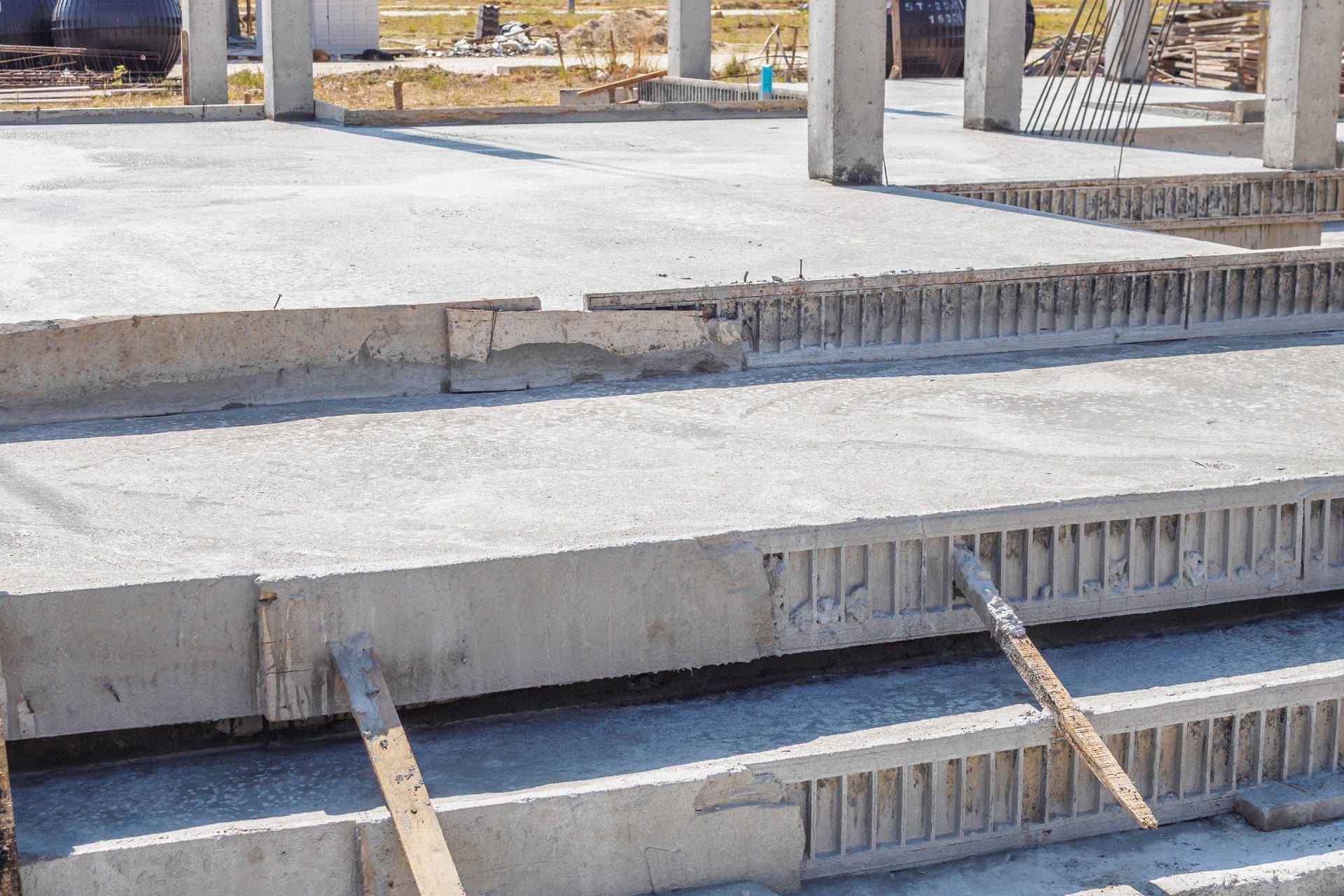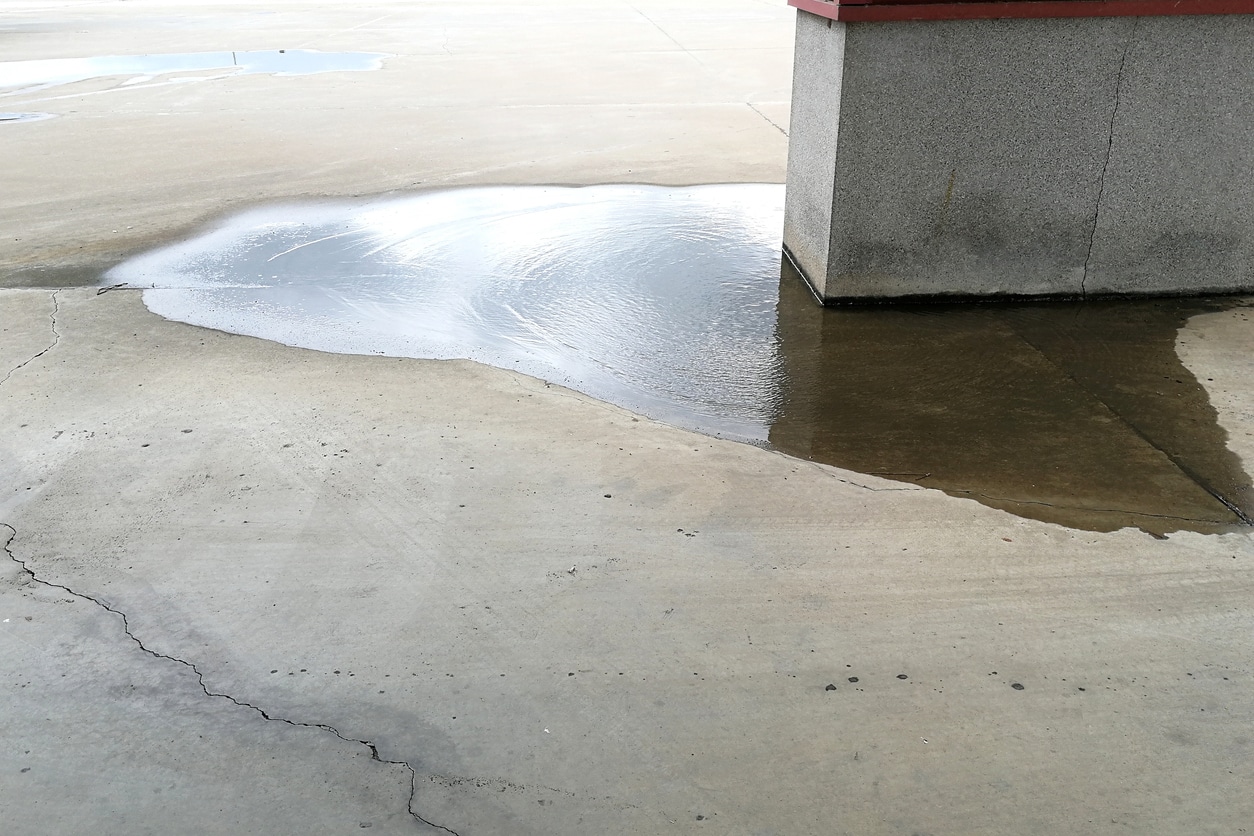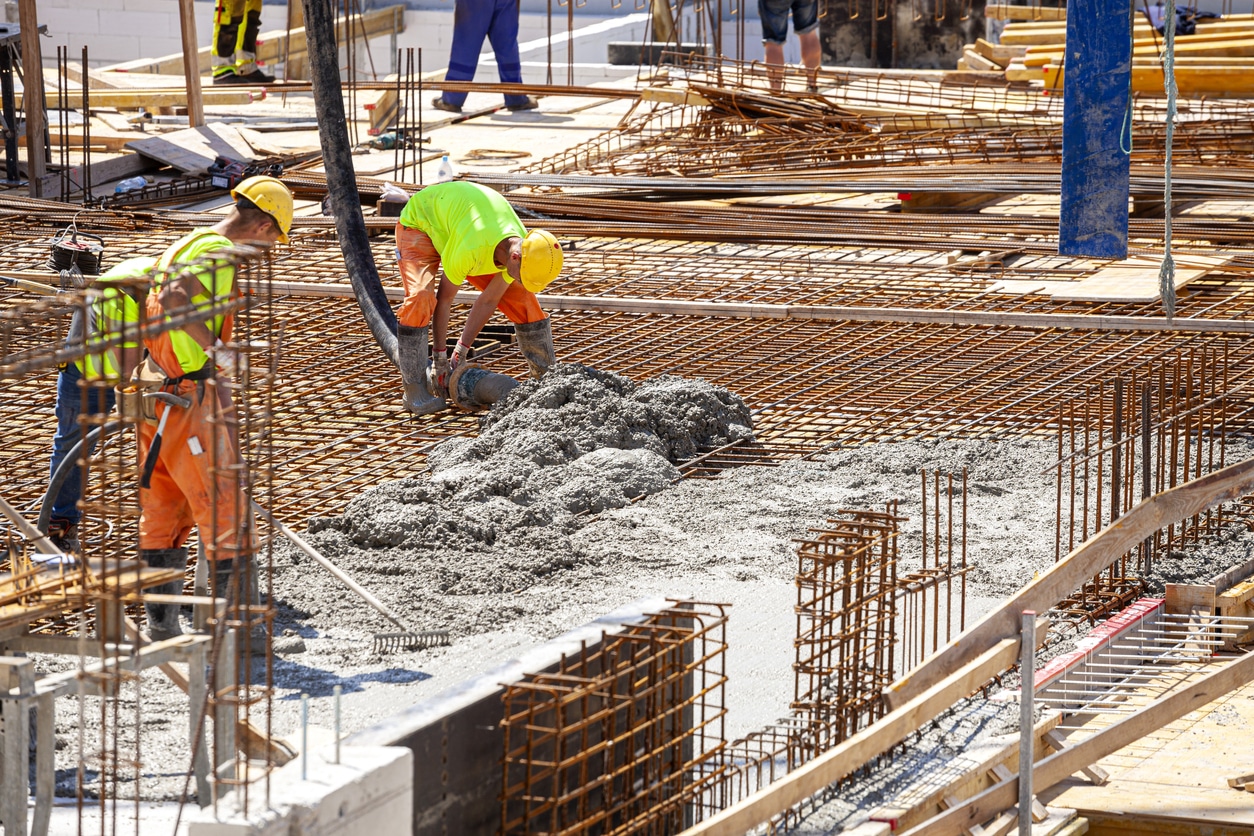Truck parking lots for commercial use must accommodate heavy loads and larger vehicles. Additionally, mixed-use…

K&E Flatwork’s Complete Guide to Concrete Flatwork
Concrete flatwork is a critical component of commercial properties, helping to create safe and attractive spaces. Whether you’re constructing a new facility or maintaining an existing one, it’s important to have a thorough understanding of what goes into creating effective concrete flatwork.
In this blog post, we’ll explore the basics of concrete flatwork and discuss why quality craftsmanship often makes all the difference in successful projects. We know a thing or two about concrete flatwork. It’s in our name, after all!
What Is Concrete Flatwork and Why Should You Care About It?
Concrete flatwork is concrete that has been evenly poured into slabs on the ground. These slabs create a perfectly flat surface, making them ideal for both indoor and outdoor spaces. Typically, concrete flatwork is used to create pathways or patios, as well as foundations or floors. Without this specialized type of construction, many structures would experience various issues related to durability or aesthetic uniformity.
You can ensure that the foundation of your structures are up to industry standards by investing in the best quality flatwork services. Doing so can help extend their life span by guarding against water leakage and other forms of damage caused by poorly laid surfaces. Ultimately, if you want well-finished structures that will stay strong for years to come, investing in high-quality commercial concrete services is definitely worth it!
The Types of Concrete Flatwork and Their Uses
Concrete flatwork is an important part of the construction trade, and there are many types that serve different purposes. Slabs are typically used for driveways, basements, and large flat surfaces, such as patios. They are composed of a thick concrete slab in order to bear heavy loads and large amounts of weight.
On the other hand, sidewalks provide paths for pedestrians. These paths consist of thinner slabs with control joints to prevent cracking due to weather or climate change exposure. Pavement is also poured into thin layers so that it can be compacted to withstand significant loads.
Foundations help support man-made structures by creating a strong base underneath them. They provide stability for walls and buildings that need added support below ground level. Overall, concrete flatwork comes in many shapes and sizes with individual applications that suit particular situations best.
How to Install Concrete Flatwork for Commercial Property Owners
Commercial property owners who are looking to install concrete flatwork like sidewalks, driveways, and porches should keep a few key things in mind.
First, it is important to make sure that the construction site meets all local zoning regulations before pouring any concrete. It is also important to take into consideration any drainage or landscaping requirements that may be necessary and factor them into the planning of the concrete flatwork installation.
The total cost of pour should also be taken into account—be sure to get a quote from at least two different contractors so that you can compare rates and services offered by each one. Lastly, always prepare for an unexpected circumstance prior to starting the project and set aside extra money just in case something unanticipated comes up during the installation of your concrete flatwork project.
Design Tips for Achieving an Attractive Appearance with Concrete Flatwork
Concrete flatwork is one of the most versatile materials in exterior design and can be used to create attractive aesthetic elements while still being economical. To get the optimal look with concrete, it is important to take into account the shape and size of the space, as well as how it will wear over time.
Flatwork should be given a minimum thickness for stability, then reinforced to minimize cracking due to weathering over time. Furthermore, textures and patterns can add interest to an otherwise bland surface. Color, either from concrete dyes or from an overlay material, such as a stamp pattern, can also increase visual appeal.
Before any project begins, consulting with a professional in concrete construction will help ensure that all steps are taken properly with appropriate material selection. With consideration to these tips, concrete flatwork is sure to create an attractive atmosphere in any outdoor space.
Common Problems and Solutions When Working with Concrete Flatwork
Working with concrete flatwork is an art and if you want to achieve the best results, it’s important to understand the most common problems and solutions. Cracking can occur due to overloading and poor mix design, which can be avoided by using reinforced concrete or a mixture that absorbs energy more effectively.
In addition, curling can cause surface issues due to temperature imbalances in the top layer of concrete during curing, but this can be remedied by using a steel trowel or reducing the water in your cement. Unevenness, on the other hand, is caused by incorrect leveling and inconsistent finishers. A quality concrete contractor should be able to address these issues with professional screeding methods or power trowels for a better finished look.
Lastly, scaling is often caused by environmental issues like freezing temperatures or extreme sun exposure, but that too can be avoided with preventative measures, such as insulation blankets or proper curing methods.
Benefits of Installing Professional Quality Concrete Flatwork
Installing professional-quality concrete flatwork can provide immense benefits for businesses. Quality concrete flatwork offers a range of advantages, from durable construction that won’t deteriorate over time to requiring less maintenance than other materials. It also stands up to bad weather conditions and is fireproof; it’s an investment that will last for years.
In addition, many people appreciate the appeal of concrete’s versatile look that brings together outdoor areas, from expansive patios to intricate walkways. Choosing professional quality concrete flatwork not only ensures the best results but also adds value to any commercial property.
Overall, concrete flatwork is an excellent choice for commercial properties; both its easy installation and simple maintenance make it the perfect option. Not only is it a versatile material that can be laid to any design, but it’s also incredibly durable and is sure to improve the overall quality of your property. In addition, the materials used in a concrete installation tend to be inexpensive and readily available, making installation fast and cost effective.
K&E Flatwork offers quality work that looks great and lasts for a long time. We ensure that the job is done effectively, efficiently, and as quickly as possible. With expertise in concrete paving, repair, and reconstruction along with experienced professionals who take pride in their craftsmanship, your flatwork will always look just right.
For professional advice or services related to concrete installation and repair in Kansas City, look no further than K&E Flatwork. Contact us today to get started on your next project!




This Post Has 0 Comments